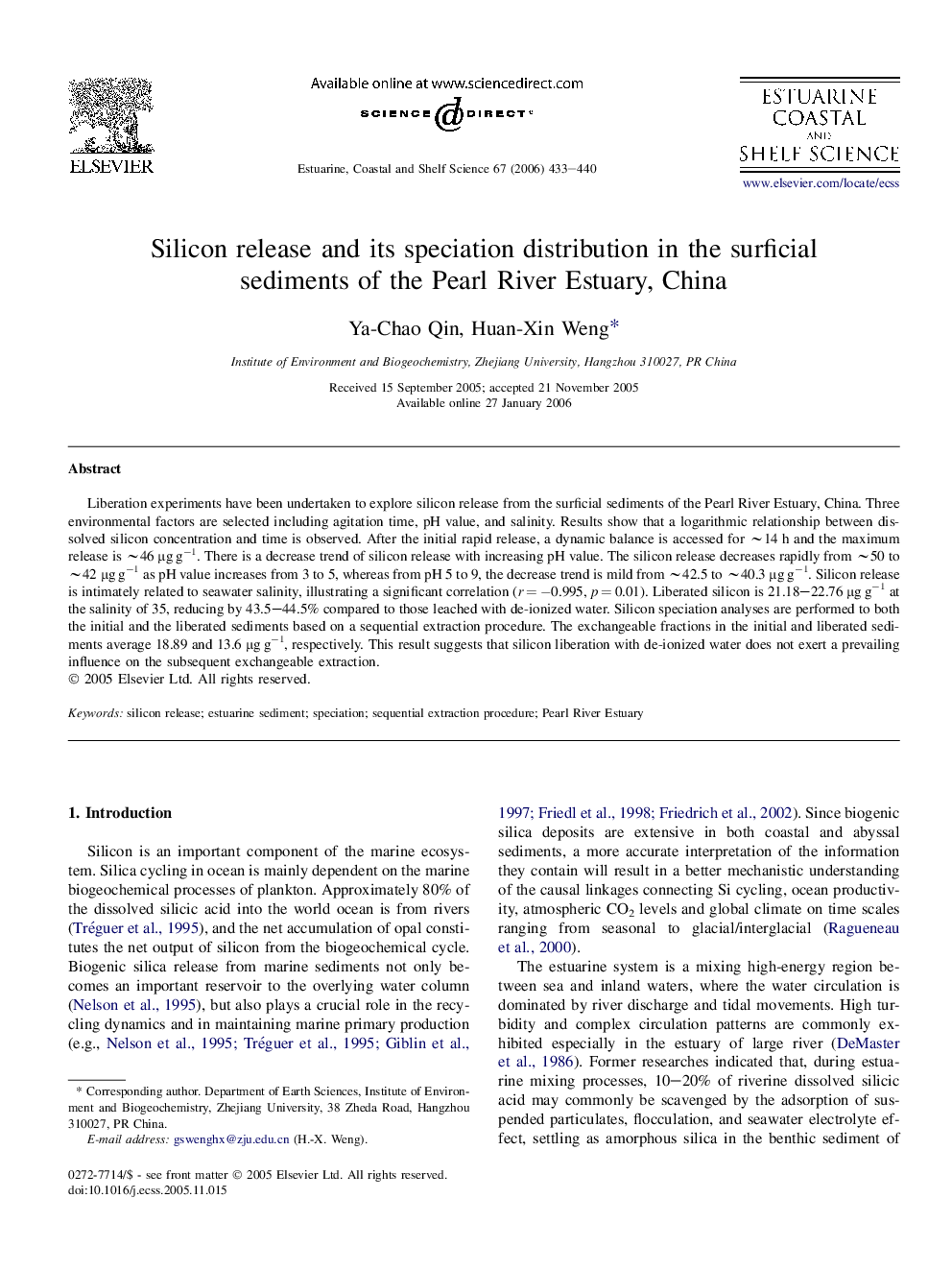| Article ID | Journal | Published Year | Pages | File Type |
|---|---|---|---|---|
| 4542398 | Estuarine, Coastal and Shelf Science | 2006 | 8 Pages |
Liberation experiments have been undertaken to explore silicon release from the surficial sediments of the Pearl River Estuary, China. Three environmental factors are selected including agitation time, pH value, and salinity. Results show that a logarithmic relationship between dissolved silicon concentration and time is observed. After the initial rapid release, a dynamic balance is accessed for ∼14 h and the maximum release is ∼46 μg g−1. There is a decrease trend of silicon release with increasing pH value. The silicon release decreases rapidly from ∼50 to ∼42 μg g−1 as pH value increases from 3 to 5, whereas from pH 5 to 9, the decrease trend is mild from ∼42.5 to ∼40.3 μg g−1. Silicon release is intimately related to seawater salinity, illustrating a significant correlation (r = −0.995, p = 0.01). Liberated silicon is 21.18–22.76 μg g−1 at the salinity of 35, reducing by 43.5–44.5% compared to those leached with de-ionized water. Silicon speciation analyses are performed to both the initial and the liberated sediments based on a sequential extraction procedure. The exchangeable fractions in the initial and liberated sediments average 18.89 and 13.6 μg g−1, respectively. This result suggests that silicon liberation with de-ionized water does not exert a prevailing influence on the subsequent exchangeable extraction.
